#grand prince gye seong
Explore tagged Tumblr posts
Photo





Under the Queen's Umbrella 슈룹 (2022)
@asiandramanet january - february bingo: LGBTQ+ REP | Grand Prince Gye Seong
#슈룹#under the queen's umbrella#kdrama#kdramaedit#asiandramaedit#perioddramaedit#yoo sun ho#grand prince gye seong#adnbingo#adnbingo janfeb24#my edit#userdramas#ccnet
58 notes
·
View notes
Text
정식 영화 다운로드 사이트 (추천)
정식 영화 다운로드 사이트 (추천) 링크<<
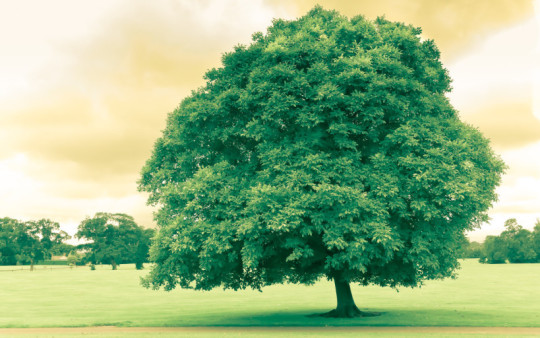
정식 영화 다운로드 사이트 (추천)
정식 영화 다운로드 사이트 (추천)
정식 영화 다운로드 사이트 (추천)
정식 영화 다운로드 사이트 (추천)
정식 영화 다운로드 사이트 (추천)
Looking at the above anecdotes, Chungnyeongdaegun clearly had greed for the throne. The eldest son, who should lead his original family, is the last human, and since it doesn't matter whether he is the second son or the third son, as long a정식 영화 다운로드 사이트 (추천)s he is not the eldest son anyway, it is presumed that he moved with thoughts about the throne. In Confucian society, if succession to the rightful eldest son is impossible among the two succession causes, the remaining one is 'Zehyeon (擇賢)'. In addition to this, there is no circumstance in which the second son, Grand Prince Hyoryeong, also showed greed for the throne, so there was no answer except for the three so정식 영화 다운로드 사이트 (추천)ns, looking at Jangyuyuseo or Taekhyun, excluding the grandguns who had absolutely disqualified reasons.
As Yangnyeong's delinquency became more severe with each passing day, records show Taejong and his superiors fully trusting Chungnyeongdaegun (later King Sejong). 瑩明, meaning intelligent), so he went around saying openly that he would inherit the throne,' and when he actually delivered a letter fro정식 영화 다운로드 사이트 (추천)m Joseon to the Ming Dynasty asking for the seal of a new crown prince, he immediately guessed that 'Chungnyeongdaegun will become the crown prince'.
In retrospect, since it was the early days of the nation's founding, there had never been a case in which the eldest son ascended the throne [20], so it was an era in which anyone정식 영화 다운로드 사이트 (추천) could be designated as the heir to the throne or ascended to the throne if he had the highest level of ability or ambition. His grandfather, Taejo, took the royal seal of Goryeo and became the first king of Joseon, and his father, Taejong, was the 5th prince and was in a disadvantageous position for succession to the throne. Since Taejong had the greatest contri정식 영화 다운로드 사이트 (추천)bution to the founding of the country and was a man with the qualifications of a king, at the beginning of the founding of the country, the officials opined that it was right to install the crown prince either as the eldest son or a prince with great contributions. The problem is that her stepmother and Yi Seong-gye's second-consort, Queen Sindeok, mad정식 영화 다운로드 사이트 (추천)e an irrational effort to put her offspring's children in the crown prince's seat, and Yi Seong-gye and Jeong Do-jeon agreed, so there was no merit in the founding process, and the youngest son, who was young, took the crown prince's seat. [22]
As a result, the princes of the Han clan, Queen Sinui, especially Yi Bang-won, were the most dissatisfied, which eventually led to the prince's rebellion. However, his father, King 정식 영화 다운로드 사이트 (추천)Taejong [23], who rose to the throne by causing the first prince's rebellion under the pretext of 'succession to the rightful eldest son', wanted to establish the principle of succession to the rightful eldest son more thoroughly than anyone else, to prevent disputes over the throne and to promote stability of the throne [24]. ] Despite the Crown Prince's continued 정식 영화 다운로드 사이트 (추천)misconduct, he hoped that the eldest son would wake up and properly inherit the throne. Above all, parents would not have liked to see their beloved children fighting for the throne like themselves and killing each other in a bloody struggle. Queen Wongyeong, Queen Min, also opposed to the end the abolishment of the crown prince and the making of Chungnyeongdaegun the new national treasure, perhaps because she w정식 영화 다운로드 사이트 (추천)as afraid of a blood-striking contest between her brothers. The problem is that the crown prince continued to do things that went against Taejong's eyes.[25] In the midst of this, Chungnyeongdaegun pressured and kept the crown prince in check, such as telling Taejong about the actions of the crown prince, and at the same time showed his behavior worthy of a model student, earning points from Taejong and his servants. There is a problem that it was written after King Se정식 영화 다운로드 사이트 (추천)jong ascended the throne, but the fact that he openly insulted the crown prince who was later deposed by Yangnyeongdaegun or revealed his intelligence was included in the as it is.[26]
1 note
·
View note
Text
I appreciate the show wordlessly telling us things through little gestures and details and I love it even more when it’s about the queen and Gye-seong. Here, the queen is telling the grand princes they need to train and receive the education of the crown prince and that they can no longer live doing whatever they want. She knows it won’t be easy on any of them but it will be a particularly heavier burden on Gye-seong as it’s evidenced by the hand holding here. It’s both comforting and apologetic.



Gye-seong accepts it but is understandably scared and anxious.


In this other scene, the grand princes are worried about their mother and come to visit her. Gye-seong proceeds to unwrap the food they brought for her and the queen notices to dyed fingernail (a traditional beauty treatment for girls and also a practice tied to the folk belief that it wards off evil spirits and that one’s first love will come true if the color remains on the fingernails until the first snow falls). One of many tiny things the queen probably missed before but she now sees, knows and understands about Gye-seong. The loving gaze and warm smile she gives her child is everything.




#under the queen's umbrella#she clearly loves all of her children#and it's all very endearing#and this one especially means so much#apologies for the crappy screencaps#it's all I can afford these days
166 notes
·
View notes
Text
Title: #underthequeensumbrella
Main Cast: #KimHyeSoo and my other two favorites #KimGaEun #OhYeJu
Episodes: 16
Platform: Netflix
Loooooooved it! I held off until about six episodes were released because I read Kim Hye Soo was carrying the drama and it's true she is the best thing about this drama but I thought the rest of the cast were pretty good too. The story was well done and the queen was just amazing. She projected motherly love and you just wanted to protect her character. I had two favorite support characters, Consort Tae who was just adorable and Crown Princess Chung Ha whose love story with the crown prince was totally cute. An extremely surprising plot point that was so heartfelt and genuine was the story of Grand Prince Gye Seong, I thought the love the Queen showed towards him was absolutely heartwarming and what an incredibly progressive storyline, absolutely loved it. I can't say enough about this drama and I definitely recommend!
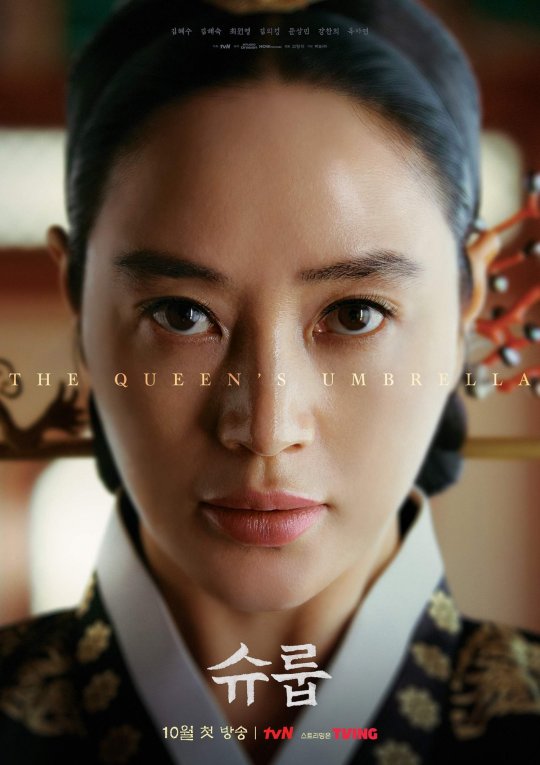
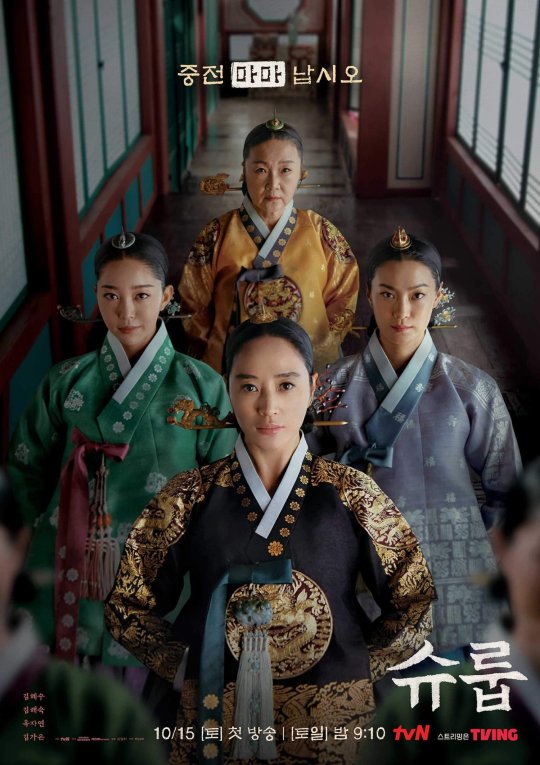
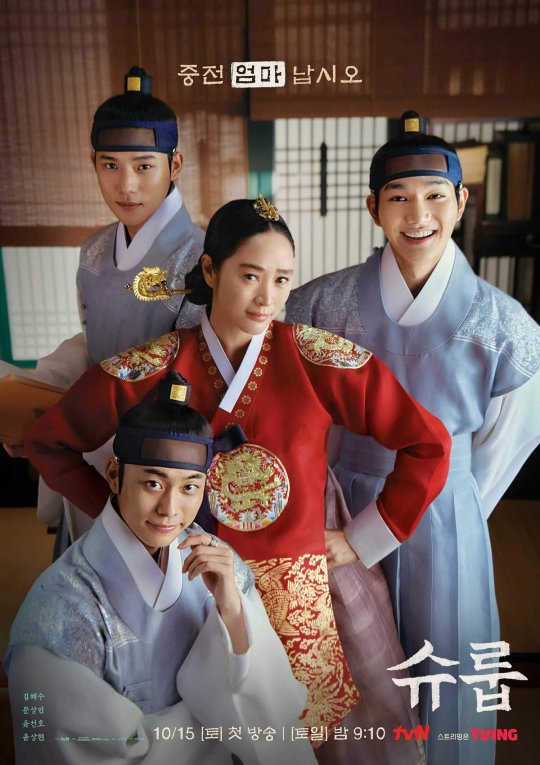
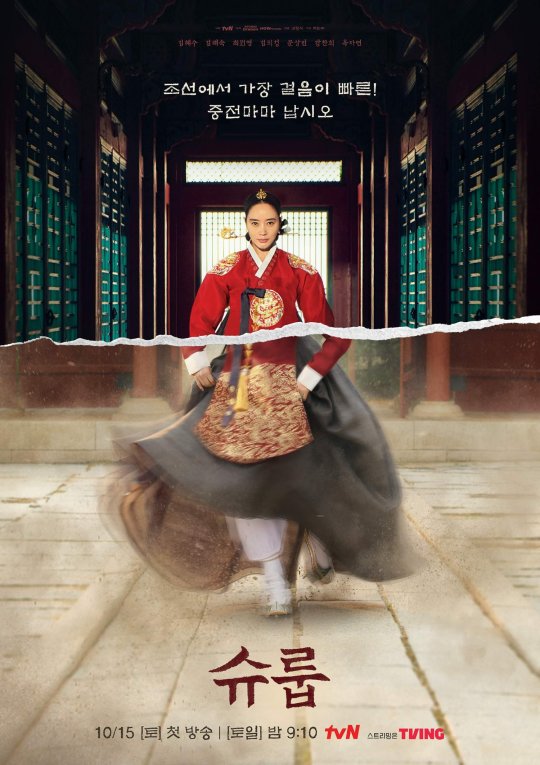
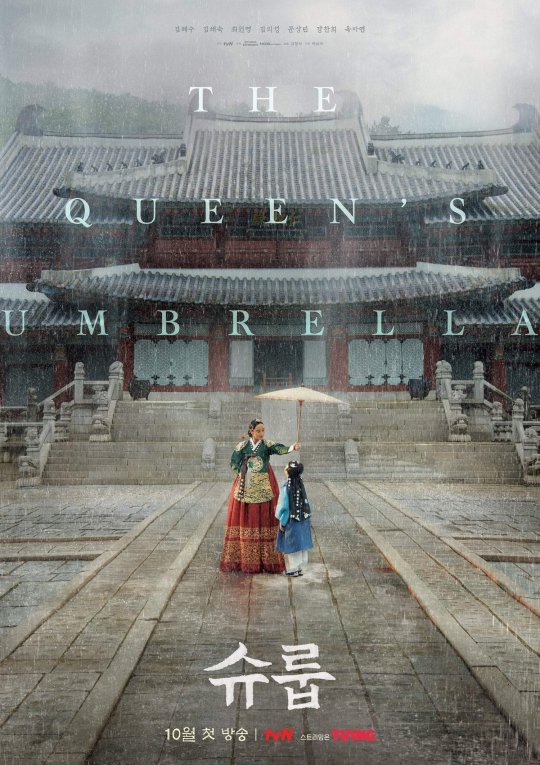
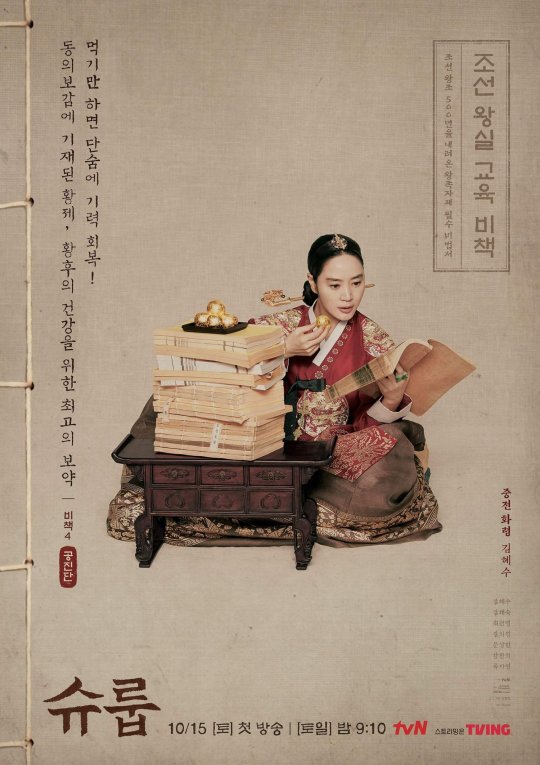
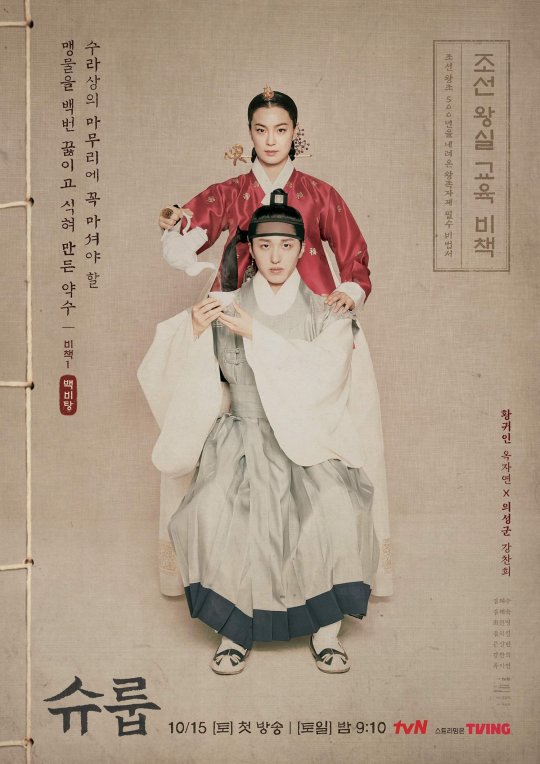
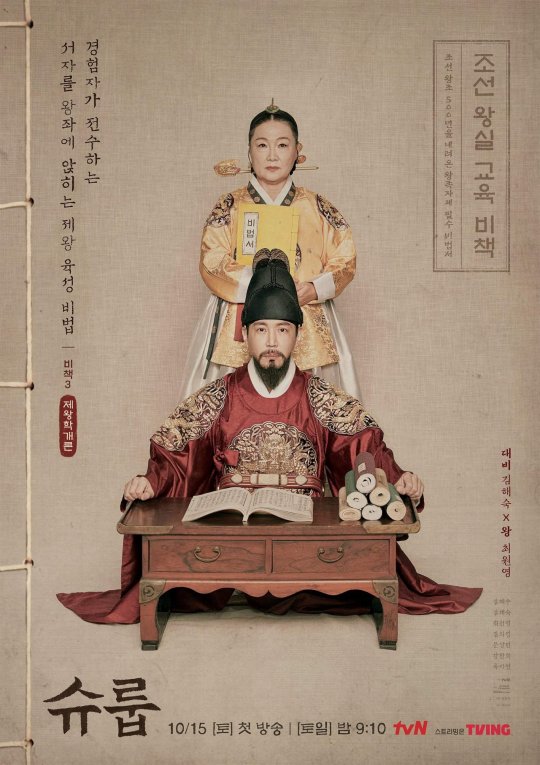

12 notes
·
View notes
Text
CONTENTS
Questions for people in the world For everlasting friendship between Korea and Japan
CONTENTS
Introduction
Question 1: Beginning of Korea
1.1. Prehistoric time
1.1.1. Emergence of archaic humans
1.1.2. Emergence of contemporary humans
1.1.3. Beginning of farming
1.2. Gojoseon period
1.2.1. Dangun Joseon
1.2.2. Gija Joseon
1.2.3. Wiman Joseon
1.3. Annexation of Korea by the Han Dynasty
1.4. Beginning of the era of the Three Kingdoms
1.4.1. Proto–Three Kingdoms period
1.4.2. Appearance of Goguryeo
1.4.3. Samhan and king of Jin
1.5. East Asia depicted in Account of Encounter with East Barbarians
1.5.1. Buyeo
1.5.2. Goguryeo
1.5.3. East Okjeo
1.5.4. Yilou
1.5.5. Ye
1.5.6. Han
1.6. Founding myths of the Three Kingdoms of Korea
1.6.1. Founding myth of Silla
1.6.2. Founding myth of Goguryeo
1.6.3. Founding myth of Baekje
1.7. Origins of Korean people seen through DNA analysis
1.8. Summary on the beginning of Korea
Question 2: Foundation and fall of the unified Silla 2.1. Era of the Three Kingdoms of Korea
2.1.1. Goguryeo
2.1.2. Baekje
2.1.3. Silla
2.1.4. Gaya confederacy
2.1.5. Tribes of the Korean Peninsula
2.2. Unification of the Korean Peninsula by Silla
2.2.1. Military conquest by Silla
2.2.2. Why was Baekje defeated by Silla?
2.2.3. Elimination of Tang by Silla
2.3. Development and decline of Silla
2.3.1. Ruling system and development of Silla
2.3.2. Decline of Silla and the Later Three Kingdoms period
2.3.3. Why did Silla fall?
2.3.4. Gyeongsun of Silla
2.4. Summary on the foundation and fall of the unified Silla
Question 3: Foundation and fall of Goryeo
3.1. Foundation of the Later Three Kingdoms
3.2. Unification of the Korean Peninsula by Goryeo
3.3. Administration system of Goryeo
3.3.1. Existence of slaves
3.3.2. Imperial Examination System
3.3.3. Decadence of Buddhism
3.3.4. The tribes of Goryeo and the Korean race
3.3.5. Significance of the foundation of Goryeo
3.4. Foundation of the military regime
3.4.1. Formation of the ruling class by well-connected officials
3.4.2. Myocheong Rebellion
3.4.3. Birth of the military regime
3.4.4. Popular rebellions
3.5. Rule of Korea by the Mongols
3.5.1. Invasions and rule by the Mongols
3.5.2. Adoption of world cultures
3.6. Fall of Goryeo
3.6.1. Elimination of pro-Yuan forces
3.6.2. Achievement by Yi Seong-gye
3.6.3. Causes of the fall of Goryeo
3.7. Summary on the foundation and fall of Goryeo
Question 4: Foundation and administration of the Joseon Dynasty
4.1. Foundation of the Joseon Dynasty
4.1.1. Beginning of the Joseon Dynasty
4.1.2. Is “serving the Great” an attitude of submission?
4.1.3. Strife of the princes
4.1.4. Construction of the royal capital
4.2. System of governance of the Joseon Dynasty
4.2.1. Governing structure
4.2.2. Establishment of the Hangul alphabet
4.2.3. Compilation of the Grand Code for State Administration
4.2.4. Class system
4.3. Summary on the foundation and administration of the Joseon Dynasty
Question 5: Conditions in the middle part of the Joseon era
5.1. About Neo-Confucianism
5.2. Hungu and Sarim factions
5.3. Struggles for power inside the royal court
5.4. Split of the Sarim faction
5.5. Factional disputes
5.6. Invasion of Korea by Hideyoshi
5.7. Mentality of “respecting the Ming and rejecting the Qing” and the Sojunghwa ideology
5.8. Summary on the middle period of the Joseon Dynasty
Question 6: Conditions in the last years of the Joseon era
6.1. Famine among farmers and exploitation by officials
6.2. Bald mountains
6.3. Situation of urban areas in such cities as Busan and Seoul
6.4. Roads, railways and ports in Korea
6.5. Korean way of working
6.6. Kings of Korea
6.7. Gwageo and the Yangbans
6.8. Class system
6.9. Courts and torture
6.10. Science, industry and commerce in the final years of the Joseon era
6.11. Oppression of Christianity and moves by Western countries
6.12. Defense system
6.13. Summary of the last years of the Joseon era
Question 7: Modernization of Korea and its obstruction
7.1. Beginning of the rule by Daewongun
7.1.1 Relationship with France
7.1.2 Battle with the U.S. Armed Forces
7.2. Conclusion of the Japan-Korea Treaty of Amity (Treaty of Ganghwa Island)
7.3. Moves toward the modernization of Korea
7.4. Development of the Yuejungchugsa movement
7.5. Uprising of soldiers and act of treachery by Queen Min
7.6. The Gapsin Coup
7.7. Situation following the Gapsin Coup
7.7.1. Reinforcement of Qing’s interference in the internal politics of Korea
7.7.2. Moves by various countries
7.7.3. Conclusion of the Treaty of Tianjin
7.7.4. Corruption of the Min Administration
7.8. Donghak Peasant Movement
7.9. Sino-Japanese War and the Second Donghak Peasant Movement
7.10. Promotion of Korea’s modernization
7.11. Hair-cropping Edict and Kim Hong-jip Administration
7.12. Russia’s expansion in Korea
7.13. Independence Association
7.14. Establishment of the Korean Empire
7.15. Summary on the modernization of Korea and the moves against it
Question 8: About the shift of Korea
8.1. The population growth rate of Korea jumped by around 15 times
8.2. No more people starved to death
8.3. Four billion trees were planted on bald mountains of Korea
8.4. Seoul was drastically modernized
8.5. Haircutting became popular on a voluntary basis
8.6. Road network covered all over Korea
8.7. The cruel whipping penalty was abolished
8.8. Sewage facilities were built
8.9. Class discrimination ended
8.10. Widespread illegal exploitation disappeared
8.11. Post, telegraph and telephone services were established
8.12. Sanitary conditions improved thanks to the development of water supply
8.13. Agricultural production increased significantly
8.14. Improved medical and sanitary environment
8.15. Sericulture greatly developed
8.16. Educational institutions developed to the same level as in Japan
8.17. Prisons were expanded and prisoner education was conducted
8.18. No more fear of being attacked by bandits
8.19. The fishery industry also developed dramatically
8.20. Electricity became available to many households
8.21. The financial system was well developed, paving the way for the modernization of the state
8.22. The railway network was built across the Korean Peninsula, making transportation convenient
8.23. The changing of names was allowed for six months only on a voluntarily basis
8.24. The rise of industry and the birth of business owners
8.25. Koreans and Japanese were equals
8.26. Summary of the evolution of Korea
Question 9: Korea’s situation after Japan’s withdrawal
9.1. Japan’s unconditional surrender and the status of Korea
9.2. Tangible assets that Japan left behind in Korea
9.3. Intangible assets with Japanese influences
9.4. The treaty concluded between Japan and South Korea
9.4.1. Establishment of the Republic of Korea
9.4.2. “Treaty on Japan-South Korea Basic Relations”
9.4.3. “Agreement on Claims and Economic Cooperation with South Korea”
9.5. ODA from Japan to South Korea
9.6. The comfort women and wartime laborers
9.6.1. Wartime laborers
9.6.2. The comfort women
9.7. South Korean enterprises and Japan’s influence
9.7.1. The Samsung Group and Japan’s influence
7.2. Relationship between Pohang Iron and Steel Co., Ltd. (POSCO) and Japan
9.8. The reality under Japanese rule experienced by the Koreans
9.9. Apology statements made by Japan to South Korea
9.9.1. Apology statements of Emperors of Japan
9.9.2. Apology statements of Japanese Prime Ministers
9.9.3. Apology statements of Japanese ministers and chief
9.10. Summary - After Japan’s withdrawal from Korea
7 notes
·
View notes
Text
KBS Daeha Dramas (17/32)
Daeha: Literally ‘Great River’ dramas, described as such because of how long events take to happen in the show. Be sure to check out the #daeha tag for more of these!
Tears of the Dragon (November 24th, 1996 ~ May 31st, 1998)
Director: Kim Jae Hyeong, Writer: Lee Hwan Gyeong Episodes: 159, broadcast every Saturday and Sunday
Featuring: Kim Mu Saeng as Lee Seong Gye Yu Dong Geun as Lee Bang Won Choi Myeong Gil as Queen Wongyeong Kim Heung Gi as Jeong Do Jeon Lee Min Woo as Grand Prince Yangnyeong
2 notes
·
View notes
Text
4.3. Summary on the foundation and administration of the Joseon Dynasty
Question 4: Foundation and administration of the Joseon Dynasty › 3. Summary on the foundation and administration of the Joseon Dynasty
Click here for table of contents
4.3. Summary on the foundation and administration of the Joseon Dynasty
(1) When founding the Joseon Dynasty, Yi Seong-gye peacefully received the throne from the royal family of Goryeo. He did not kill the king of Goryeo and instead gave him a fief in the Gyeonggi province, asking him to offer prayers to the ancestors of the Wang clan. He allowed members of the same clan to live together with their wives, children and servants as before.
(2) Describing that the newly risen literati and the emerging warriors seized power on the occasion of the Wihwado Retreat led by Yi Seong-gye, High School Textbook describes the fact that Yi purged his political enemies and came to power by means of a military coup simply as a “Retreat”. In other words, High School Textbook conceals in history education that Yi Seong-gye gained control over the government in 1388 by means of a military coup.
(3) Upon request from Yi Seong-gye, Emperor Hongwu of Ming named “Joseon” the new state created by the Revolution decreed by Heaven, saying that the appellation of Joseon was quite beautiful and dated back to the far past. Joseon has been beautifully translated as “the Land of the Morning Calm”.
(4) In September 1394, after the enthronement of Yi Seong-gye in Gaeseong, he planned to build a new royal capital to achieve a complete change in the public sentiment. Following the Feng Shui geographical theory, he decided to transfer the capital to Hanseong (today’s Seoul). Today’s city of Seoul was built by Yi Seong-gye.
(5) In August 1398, Bang-won, the fifth son of Yi Seong-gye, found out about a plan to kill him, so he killed the plotter and his accomplices, and banished and murdered his stepbrothers. This incident was the First Strife of Princes. Among the three brothers born of the same mother, Bang-gan took up arms against Bang-won but was defeated. Bang-gan was banished and later murdered. This was the Second Strife of Princes.
(6) The Consolidated Command of the Three Armies (Uiheung Samgunbu) was established as the military organ on the central administrative level. In addition to the abolition of private army, the Privy Council was reorganized into the State Council of Joseon (Uijeonbu). The Joseon Dynasty reinforced the royal authority by developing the governance system through the establishment of the Six Ministries (Ijo (personnel), Hojo (taxation), Yejo (Rites), Byeongjo (military affairs), Hyeongjo (law enforcement) and Gongjo (public works)) under the State Council of Joseon.
(7) Sejong established and promulgated the Hangul alphabet. Hangul started as an unprecedented artificially devised character system that was rational and scientific, integrating the achievement of the Chinese phonology of the day.
(8) Sejo continued the administrative reform, started the compilation of the code of law and engaged in the compilation of the Grand Code for State Administration. It was not completed before his death, and was enforced from January 1485, under the rule of Seongjong. The Grand Code for State Administration was composed of six parts: Personnel, Taxation, Rites, Military Affairs, Justice and Public Works. As the general fundamental code, it was observed for over the 500 years during the Joseon era.
(9) During the Joseon era, the caste system was enforced as the legal class system of the state. People were divided into law-abiding people and lowly people in the hereditary manner.
On top of the law-abiding people were the scholar-gentry. As the ruling class, they dominated the local community, against a background of Confucian knowledge and culture. Consequently, the term Yangban, which originally referred to officials, gradually began to be used as the third person title or honorific title for the scholar-gentry.
Most of the law-abiding people were commoners, called sanghan, and the great majority of them were ordinary peasants. They were subject to heavy tax and labor service.
Members of the lowly class were, in fact, slaves. They had no right of survival, had no names, were owned by others as important assets to provide labor, and were subject to trade, transfer and succession. As seen from this, slaves who were not recognized as humans occupied an important part of the population in the Joseon Dynasty of the day.
Above was the situation at the beginning of the Joseon Dynasty era.
What is noteworthy here is that High School Textbook refers to the military coup by Yi Seong-gye as “Retreat”, suggesting that the royal authority was peacefully transferred with the help of civil officers.
It is presumable that Korean textbooks hide the fact of the military coup to deny the legitimacy of the administration of Park Chung-hee, who also seized power by means of a coup. The goal would be to insist that the treaty concluded between the Park Chung-hee administration and Japan is illegitimate and cannot be approved.This is because if they accept this treaty, there will no longer be any basis for South Korea's anti-Japanese activities and it will become impossible to make various claims against Japan based on fabricated foundations.
While Park Chung-hee was a military officer, he seized power by a coup in May 1961, becoming the Chairman of the President of the Supreme Council for National Reconstruction. After that, he was nominated as President by winning five consecutive general elections in 1963, 1967, 1971, 1972 and 1978. He governed South Korea for around 18 years until December 1979.
He was highly regarded for leading the rapid economic growth called “Miracle on the Han River” that was to continue for around 30 years from that time. That was the achievement of the Park Chung-hee administration. His reputation also derives from the huge influx of funds and technology from Japan through the conclusion of the treaty.
Even if the Korean government as of 2020 would like to deny the legitimacy of the Park Chung-hee administration and insist that all the decisions and policies taken during these 18 years are invalid, this period certainly existed in Korean history and cannot be deleted. People in Korea have benefited from the rapid growth achieved during this period. No one can deny the fact. Nevertheless, the Korean government as of 2020 seeks to disregard these facts and benefits and insists that “all measures implemented by the Park Chung-hee administration over 18 years are illegitimate”, thereby ruling that Korea’s treaty with Japan is also illegitimate.
Who gave the current Korean government of 2020 the right to deny the legitimacy of a president who was elected by the people five times? If the current administration is allowed to deny the 18 years of rule by an administration that was elected by its citizens, such a country will surely drift aimlessly without a past.
We believe that the people of Korea today should recognize and fairly appreciate that they have benefited from the growth achieved by the Park Chung-hee administration called “Miracle on the Han River”. Surely the proper Confucian teaching is to express gratitude for this, feel ashamed for having illegitimately disgraced the administration of Park Chung-hee and instead praise him for his achievements. We believe that doing so would enrich Korean society and help people feel content and happy.
We believe that the only way to normalize the relationship between Korea and Japan is for the state to observe its treaties faithfully and sincerely, even if they were concluded by former administrations.
This is a basic international rule. A country that unilaterally violates an international treaty signed by a previous administration for arbitrary reasons given by the subsequent administration will only lose credibility from the rest of the world. It is not permissible to ignore and break international treaties for domestic reasons. Japan has already fulfilled its enormous obligations to Korea as stipulated in the 1965 treaty. We believe that Korea should also faithfully and sincerely abide by its provisions.
We would like people in the world to judge if such a belief is appropriate.
0 notes
Text
The Outer Court
The Outer Court, or Wemyeongbu (외명부 外命府) consists of the wives and mothers of peripheral royals, ministers and officials working in the Palace. Headed by the Queen, these ladies were not subject to the same strict code as the Inner Court/Naemyeongbu (내명부 內命府), but to the ideals and morals of Confucianism. I’m just covering Goryeo and Joseon’s Outer Court Hierarchy, since they’re the most organized (and I don’t know enough Korean to understand the previous dynasties’ situations as to whether they even had an Outer Court back then)
Goryeo
From Emperor Munjong’s reign, there was one hierarchy in the Outer Court; The Royal Periphery (That’s just what I’m calling it; I don’t know what 의친 is and it doesn’t seem to be a common term either - perhaps relatives of the consorts and concubines?).
The Royal Periphery went as follows:
Upper Rank 1: Princesses (Gongju 공주 公主) and Esteemed Princesses (Daejang Gongju 대장공주 大長公主)*
Upper Rank 3: National Grand Ladies (Guk Daebuin 국대부인 國大夫人)
Upper Rank 4: Official Grand Ladies (Gun Daebuin 군대부인 郡大夫人) and Official Ladies (Gungun 군군 郡君)
Upper Ranks 5 and 6: Provincial Ladies (Hyeon Gun 현군 縣君)
Later on, during Seongjong’s reign, the Munmu Office was established, consisting of the hierarchies of the ministers’ wives and mothers. The hierarchy for officials’ wives was as follows:
Rank 1: Lesser National Ladies (So Gukbuin 소국부인 小國夫人)
Rank 2: Grand Official Ladies (Dae Gunbuin 대군부인 大郡夫人)
Rank 3: Middle Official Ladies (Jung Gunbuin 중군부인 中郡夫人)
Rank 4: Official Ladies (Gungun 군군 郡君)
Rank 5: Provincial Ladies (Hyeon Gun 현군 縣君)
I think King Gongmin slightly modified the system, but it was returned to its original form by the Supreme Council during King Wu’s reign. The hierarchy of the ministers’ mothers was as follows:
Ranks 1~3: Grand Ladies (대부인 大夫人)
Rank 4: Official Ladies (Gunbuin 군부인 郡夫人)
Ranks 5 and 6: Provincial Ladies (Hyeonbuin 현부인 縣夫人)
Outside of these systems, there were other titles involved - during Mid-Goryeo, the Emperor’s daughter was also a Gongju (Princess), but was sometimes referred to as Palace Princess (궁공주 宮公主) to differentiate. In Late Goryeo, both during and after the Yuan Occupation, the wives of the King’s son, along with the Crown Prince’s princes were known as Ongju (옹주 翁主), along with the daughters of concubines. It has been seen in documents from King Gongyang’s time that even the Crown Prince’s daughters were known as Ongju.
Joseon
At the time of Lee Seong Gye’s enthronement, the Outer Court was temporarily copied from Goryeo with mild alterations. For example, the King’s daughter was an Upper Rank 1 Gungju (궁주 宮主), and the Crown Princess’ mother was known as Taekju (택주 宅主). The King’s grandmother (on the mother’s side), along with the Queen’s mother were known as National Grand Ladies.
Five years later, the system was extended so that ministers’ wives would be known as follows:
Rank 1: Official Ladies (Gunbuin 군부인 郡夫人)
Rank 2: Provincial Ladies (Hyeonbuin 현부인 縣夫人)
Rank 3: Suk In (숙인 淑人)** and Young In (영인 令人)
Rank 4: Gong In (공인 恭人)
Rank 5: Ui In (의인 宜人)
Rank 6: An In (안인 安人)
Rank 7~9: Yu In (유인 孺人)
By Taejong’s 17th year, the system was as follows:
Royal Periphery
Upper Upper Rank 1***: Grand Lady of the Three Kingdoms (Samhanguk Daebuin 삼한국대부인 三韓國大夫人) - Wives of princes born of the Queen.
Lower Upper Rank 1: Grand Lady of the Kingdom (Mohanguk Daebuin 모한국대부인 某韓國大夫人) - The Queen’s Mother.
Lower Rank 1: Lady of the Kingdom (Mohanguk Buin 모한국부인 某韓國夫人) - Wives of princes born of concubines.
Rank 2: Ijaho**** Taekju (이자호 택주 二字號宅主) - Wives of the Jeongheon Jegun (정헌제군 正憲諸君) and Gajeong Jegun (가정제군 嘉靖諸君), titles for princes related to the King I guess
Rank 3: Shin In (신인 愼人) - Wives of the First Sons of the King’s brothers (?)
Rank 4: Hye In (혜인 惠人) - Wives of the King’s brothers’ other sons
Ministers’ Wives
Upper Upper Rank 1: Grand Lady of the Kingdom (Mohanguk Daebuin 모한국대부인 某韓國大夫人) - Wives of the Left and Right Minister
Lower Upper Rank 1: Lady of the Kingdom (Mohanguk Buin 모한국부인 某韓國夫人) - Wife of the Head of Provincial Officials (제부원군 諸府院君)
Lower Rank 1~Rank 2: Ijaho Taekju (이자호 택주 二字號宅主): Wives of other Ministers
Officials’ Wives
Rank 1: Lady Jeongsuk (정숙부인 貞淑夫人)
Rank 2: Lady Jeong (정부인 貞夫人)
Special Upper Rank 3: Suk In (숙인 淑人)**
Upper and Lower Rank 3: Young In (영인 令人)
Rank 4: Gong In (공인 恭人)
Rank 5: Ui In (의인 宜人)
Rank 6: An In (안인 安人)
Rank 7~9: Yu In (유인 孺人)
In Sejong’s 4th year, it was decided that the Princess title Gungju was too Goryeo for them, and it was deprecated in favor of Gongju. In his 13th year, he declared the King’s brothers’ daughters and his daughters in law were to be known as Gunju (군주 郡主) and Hyeon Ju (현主 縣主), based on legitimacy. In his 22nd year, these were reverted to Gongju, along with changing the Crown Prince’s illegitimate daughters and other princes’ legitimate daughters to Hyangju (향주 鄕主), and peripheral princesses as Jeongju (정주 亭主). This was later changed so that the King’s illegitimate daughters were Ongju, and the Crown Prince’s daughters were to be Gunju and Hyeonju. This system’s finer details were never truly finalized until later on.
By Seongjong’s 15th year, the system settled into the more familiar system:
Royal Periphery
Upper Rank 0: Gongju (공주 公主): King’s daughters of the Queen.
Lower Rank 0: Ongju (옹주 翁主): King’s daughters of the concubines.
Upper Rank 1: Bubuin (부부인 府夫人) - The Queen’s Mother.
Lower Rank 1: Bongbo Buin (봉보부인 奉保夫人): The King’s nanny.
Upper Rank 2: Gunju (군주 郡主): The Crown Prince’s legitimate daughters
Upper Rank 3: Hyeonju (현主 縣主): The Crown Prince’s illegitimate daughters
Extended Royal Periphery
Upper Upper Rank 1: Bubuin (부부인 府夫人) - Wives of princes born of the Queen.
Lower Upper Rank 1~Lower Rank 1: Gunbuin (군부인 郡夫人) - Wives of princes born of concubines, wives of high ministers
Rank 2: Hyeonbuin (현부인 縣夫人)
Special Upper Rank 3**: Shinbuin (신부인 愼夫人)
Upper~Lower Rank 3: Shin In (신인 愼人)
Rank 4: Hye In (혜인 惠人)
Rank 5: On In (온인 溫人)
Upper Rank 6: Sun In (순인 順人)
Officials’ Wives
Rank 1: Lady Jeonggyeong (정경부인 貞敬夫人)
Rank 2: Lady Jeong (정부인 貞夫人)
Special Upper Rank 3**: Suk Buin (숙부인 淑夫人)
Upper and Lower Rank 3: Suk In (숙인 淑人)
Rank 4: Young In (영인 令人)
Rank 5: Gong In (공인 恭人)
Rank 6: Ui In (의인 宜人)
Rank 7: An In (안인 安人)
Rank 8: Dan In (단인 端人)
Rank 9: Yu In (유인 孺人)
This system held until the end of Joseon, with minor changes, such as that in Injo’s reign where the Crown Prince’s daughters were reverted to Gongju and Ongju, based on legitimacy. Also, from Sejong’s reign, the original title of the King’s mothers-in-law and external grandmothers, National Grand Lady (Guk Daebuin 국대부인 國大夫人) was changed to Bubuin. However, Cheoljong changed it to Bu Daebuin (부대부인 府大夫人).
*Esteemed Princesses were the aunts of Goryeo Emperors.
**Reserved for the wives of Officials of the same rank in Seonggyungwan.
***Yes, you read that correctly.
****Ijaho translates literally to ‘Name of Two Characters’, so I’m not really sure if this is part of the title at all.
10 notes
·
View notes